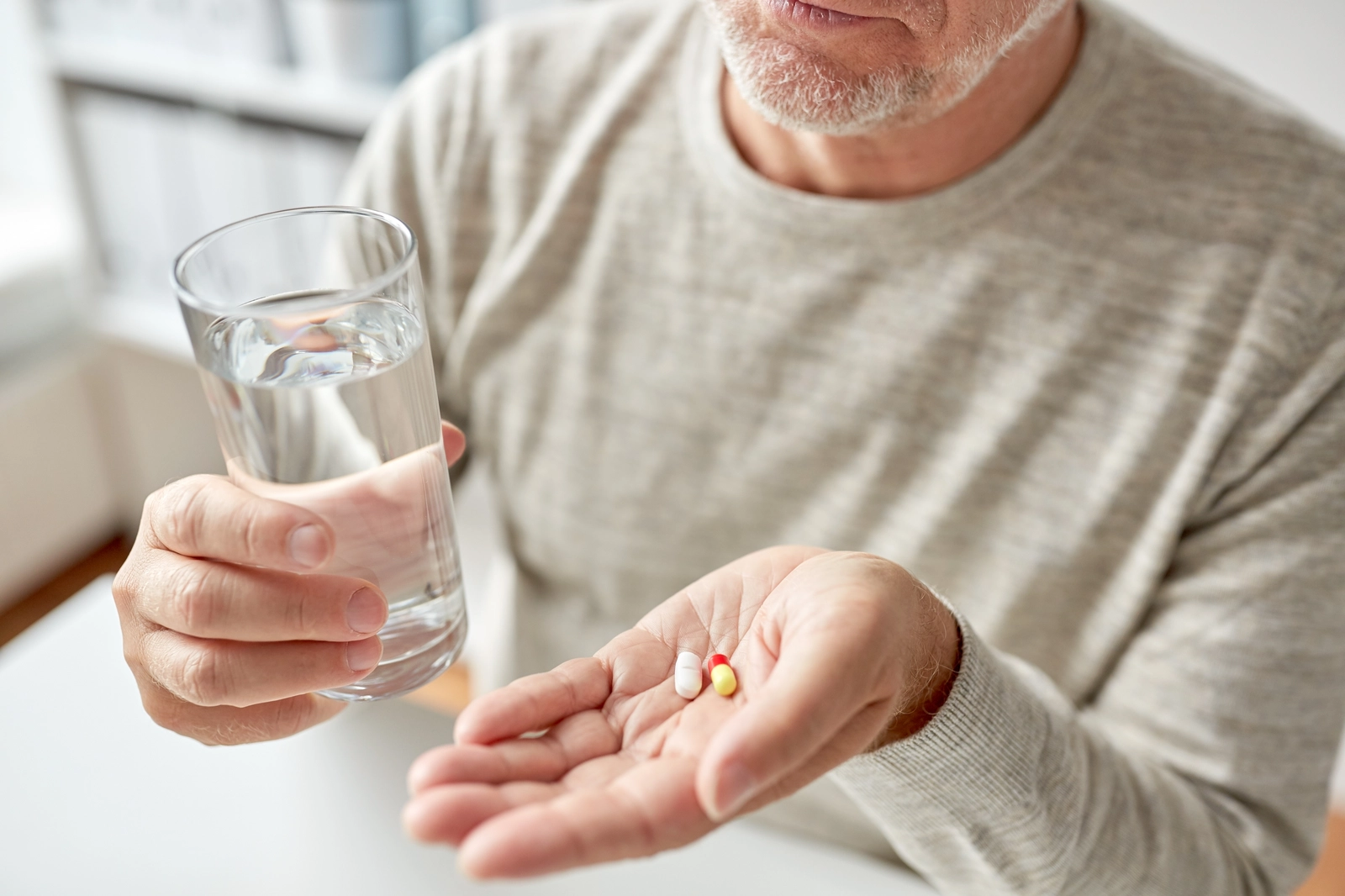Substances | 4 min read
Gabapentin and Tylenol: Can They Be Taken Together?
Medically Reviewed By

on April 7, 2025
Written By
On April 7, 2025

What you will learn
- Gabapentin and Tylenol can safely work together since they target different types of pain in the body.
- The maximum daily adult dose of Tylenol should not exceed 4,000 mg, with some doctors recommending staying under 3,000 mg for long-term use.
- Common side effects of combining these medications include increased drowsiness, dizziness, and coordination problems.
- Gabapentin treats various conditions, including epilepsy, nerve pain, postherpetic neuralgia, and restless legs syndrome.
- Both medications require careful monitoring of kidney function since they are processed through the kidneys.
- In case of a suspected overdose, immediate medical attention is crucial by calling emergency services or going to the nearest emergency room.
Many people who take gabapentin for nerve pain, seizures, or other conditions often wonder about combining it with common over-the-counter pain relievers like Tylenol (acetaminophen). The safety of mixing these medications is a frequent concern that deserves careful consideration, as understanding potential interactions helps ensure effective and safe pain management in your overall treatment plan.
What is Gabapentin?
Gabapentin is an anticonvulsant medication that was originally developed to treat epilepsy but has since become widely used for various conditions, particularly nerve pain.[1] The medication reduces abnormal electrical activity in the brain and alters how nerves send signals throughout the nervous system. This mechanism helps decrease seizure frequency and alleviates neuropathic pain.
When prescribed by doctors, gabapentin treats conditions such as postherpetic neuralgia (lingering pain after shingles), diabetic neuropathy, restless legs syndrome, and certain types of seizures. The medication comes in several forms, including oral capsules, tablets, and liquid solutions, allowing for flexible dosing based on each person’s specific needs and medical condition. While not classified as a controlled substance in many places, healthcare teams typically monitor its use carefully due to potential side effects and the importance of proper dosing.[2]
What is Tylenol?
Tylenol, known generically as acetaminophen, is one of the most commonly used over-the-counter pain relievers and fever reducers worldwide.[3] This medication works primarily in the brain’s pain and temperature control centers, helping to block pain signals and lower fever without affecting inflammation like other pain medications do. Unlike aspirin or ibuprofen, Tylenol does not cause stomach irritation when used as directed.
Beyond its role in treating minor aches and pains, Tylenol is a key ingredient in numerous combination cold and flu medicines. While generally considered safe when taken as directed, the medication requires careful attention to dosing, as exceeding the recommended amount can lead to liver damage.[4] Healthcare teams often recommend Tylenol as a first-line treatment for mild to moderate pain due to its proven safety record and minimal drug interactions when used properly.
Can Gabapentin and Tylenol Be Taken Together?
Most healthcare teams confirm that gabapentin and Tylenol can be safely taken together as they work through different mechanisms in the body.[5] This combination often provides complementary pain relief, with gabapentin targeting nerve pain, while Tylenol addresses general pain and fever.
It’s important to follow prescribed dosages for gabapentin and stay within the recommended daily limit of Tylenol when taking both. According to reliable academic sources, the maximum recommended Tylenol dose is 4,000 mg daily for adults, though some doctors suggest staying below 3,000 mg daily for long-term use.[6] Each medication should be taken according to its specific schedule and dosing instructions.
It’s also essential to inform your healthcare provider about all your medications, including over-the-counter drugs and supplements. This helps ensure safe usage and allows for monitoring of potential side effects. Your doctor might adjust the dosages of either medication based on your specific medical conditions, other medications, and overall treatment goals.
Are There Any Interactions To Be Aware Of?
While gabapentin and Tylenol don’t have direct interactions with each other, taking them together can increase certain side effects. The most common overlapping side effects include drowsiness, dizziness, and coordination difficulties.[7] These effects may be more noticeable when starting the combination or after dosage changes.
Taking these medications together might cause increased sleepiness, affecting activities like driving or operating machinery. People with kidney problems need special consideration, as both medications are processed through the kidneys. Your doctor may need to adjust dosages to prevent any strain on kidney function.
It’s worth noting that Tylenol‘s pain-relieving effects might mask certain side effects or symptoms that would otherwise alert you to problems with gabapentin. It is important to track any new or worsening symptoms and discuss them with your healthcare team. The combination could also increase the risk of confusion, sedation, or impaired thinking, especially in older adults or those taking other medications that affect the central nervous system.
Can Gabapentin and Tylenol Be Abused?
Gabapentin misuse has become increasingly recognized in recent years, particularly among people with a history of substance use. When taken in high doses, the medication can produce feelings of relaxation, calmness, and euphoria. People often combine it with other substances to enhance these effects, which can lead to dangerous outcomes.
Tylenol, while not typically associated with misuse for its effects, can be extremely dangerous if taken in amounts exceeding the recommended dose. Taking too much Tylenol can cause severe liver damage or failure, which may be life-threatening. The risk becomes even higher when combined with alcohol or other medications that affect the liver.
The Risks of Prescription and Over-the-Counter Medication Abuse
Prescription and over-the-counter medication abuse represent a significant public health concern, with potentially severe consequences for physical and mental health. When medications are taken differently than prescribed, combined inappropriately, or used without medical supervision, they can lead to dangerous outcomes, including overdose, organ damage, and dependency.
Common prescription medications that are subject to misuse include opioid painkillers, benzodiazepines, sleep medications, and anticonvulsants like gabapentin. These medications can produce euphoric effects or altered mental states when taken in high doses or combined with other substances. The risks increase substantially when multiple medications are mixed, as their effects can interact in unpredictable and potentially lethal ways.
Over-the-counter medications also carry risks of abuse despite their widespread availability.[8] Products containing acetaminophen, when taken in excessive amounts, can cause severe liver damage. Cough medicines containing dextromethorphan may be misused for their dissociative effects. Even seemingly harmless sleep aids can lead to dependency and adverse effects when used improperly.
What To Do In Case of Overdose
If a suspected overdose of gabapentin, Tylenol, or both medications occurs, immediate medical attention is crucial. Call 911 right away or go to the nearest emergency room. Do not wait to see if symptoms improve; early treatment is critical for the best possible outcome.
Signs of a Tylenol overdose may include:
- Nausea and vomiting
- Loss of appetite
- Upper right abdominal pain
- Dark urine
- Yellowing of the skin or eyes
- Excessive sweating
Signs of a gabapentin overdose may include:
- Extreme drowsiness
- Slurred speech
- Double vision
- Uncontrolled eye movements
- Severe dizziness
- Difficulty breathing
While waiting for emergency help:
- Gather medication bottles to show medical staff
- Note the time and amount of medications taken
- Do not induce vomiting unless specifically instructed by medical professionals
- Stay awake or have someone monitor your consciousness
- Record any symptoms to report to healthcare providers
Frequently Asked Questions About Gabapentin and Tylenol
Gabapentin and Tylenol together can increase drowsiness and affect coordination, especially when first starting the combination or after dose changes. Do not drive or operate machinery until you know how these medications affect you. Some people may experience more significant drowsiness than others. If you notice severe drowsiness, discuss this with your healthcare provider, as dosage adjustments may be needed.
Neither gabapentin nor Tylenol have significant food interactions. However, high-fat meals may slow down gabapentin absorption slightly. It’s generally recommended to take gabapentin at the same times each day after meals for consistent absorption. Avoid excessive alcohol consumption while taking either medication, as this can increase the risk of liver damage with Tylenol and enhance drowsiness with your dose of gabapentin.
Always consult your healthcare provider before adding any pain medications to your regimen. While gabapentin and Tylenol can be taken with certain other pain relievers, some combinations may not be safe. Be especially careful with medications containing acetaminophen (the active ingredient in Tylenol and other NSAIDs) to avoid exceeding the maximum daily dose. Your healthcare provider can create a safe pain management plan tailored to your needs.
Tylenol can be taken with or without food, as it doesn’t typically cause stomach upset. Gabapentin can be taken with or without food, but taking it with food may help reduce stomach-related side effects. If you experience nausea when taking either medication, trying them with food might help. Maintain consistency in how you take your medications to ensure reliable absorption.
Ascendant New York Editorial Guidelines
Here at Ascendant New York, we understand the importance of having access to accurate medical information you can trust, especially when you or a loved one is suffering from addiction. Find out more on our policy.
[1] MedlinePlus. (2020, May 15). Gabapentin: MedlinePlus Drug Information. Medlineplus.gov. https://medlineplus.gov/druginfo/meds/a694007.html on January 16, 2025
[2] Is gabapentin a controlled substance / narcotic? (n.d.). Drugs.com. https://www.drugs.com/medical-answers/gabapentin-narcotic-controlled-substance-3555993/ on January 16, 2025
[3] Gerriets, V., & Nappe, T. M. (2024, January 11). Acetaminophen. National Library of Medicine; StatPearls Publishing. https://www.ncbi.nlm.nih.gov/books/NBK482369/ on January 16, 2025
[4] Acetaminophen: Too much is dangerous for your liver. (n.d.). Www.ucihealth.org. https://www.ucihealth.org/blog/2018/03/acetaminophen-liver-failure on January 16, 2025
[5] Drugs.com. (2024). Gabapentin and Tylenol Interactions. Drugs.com. https://www.drugs.com/drug-interactions/gabapentin-with-tylenol-1147-0-11-12.html on January 16, 2025
[6] Harvard Health Publishing. (2018, October 23). Acetaminophen safety: Be cautious but not afraid – Harvard Health. Harvard Health; Harvard Health. https://www.health.harvard.edu/pain/acetaminophen-safety-be-cautious-but-not-afraid on January 16, 2025
[7] Gabapentin vs Tylenol Comparison – Drugs.com. (2024). Drugs.com. https://www.drugs.com/compare/gabapentin-vs-tylenol on January 16, 2025
[8] Cooper, R. J. (2011). Over-the-counter medicine abuse – a review of the literature. Journal of Substance Use, 18(2), 82–107. https://pmc.ncbi.nlm.nih.gov/articles/PMC3603170/ on January 16, 2025




